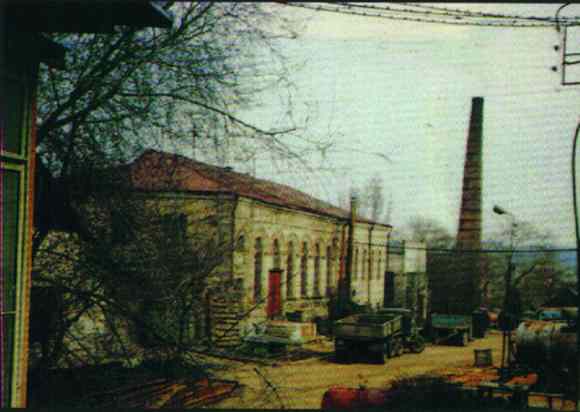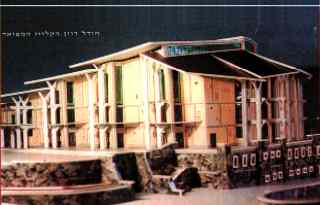5572 -- From the Hamber to Shomrim Laboker
For the very first Rosh Hashanah after Rebbe
Nachman's passing,
the Breslovers had decided to pray in the hamber, a large
enclosed
patio, of one of the homes that Rebbe Nachman had stayed while in Uman.
Reb Noson had certain misgivings about this choice. He understood that
the Rebbe wanted his chassidim to mix with other Jews. So, as mincha
got under way, Reb Noson took himself and headed for the main synagogue
in Uman, Shomrim Laboker. When the others saw that Reb Noson
left,
they followed him. For ten years the kibutz was held in the Shomrim
Laboker synagogue.
5582 -- The Kibutz Moves
For Rosh Hashanah 5582 Reb Mordechai, one of the
prominent
members of the Uman Jewish community invited the Breslover Chassidim to
pray in his large home. As Reb Noson wrote, "God took pity on us and
sent
Reb Mordechai to invite us into his home. He was very generous,
clearing
out two rooms for our use and providing us with tables, benches,
candles
and everything we needed." For the next five years the kibutz
was
held in Reb Mordechai's house until it became too small to hold all the
worshippers. In 5587 the Breslovers had no choice but to meet in the hamber. |
5590 -- A Movement to Build the Kloiz
"By 5590 it was just impossible to continue
there," writes
Reb Noson. "We were very upset and were looking for a place to rent.
God
had something prepared for us. He sent us an individual whose new home
was being finished. He wanted his new inaugurated by the holiness of
the
prayers kosher, God-fearing Jews. That is where we prayed."
***
So it was, that Breslover Chassidim wandered from
place to
place to pray on Rosh Hashanah.
Finally, after all the setbacks and delays, a
movement
began to build a permanent Breslover Kloiz. As we quoted above,
Reb Mendel of Ladizin said, "Reb Noson! If you don't build a beit
knesset
for us Breslovers you won't have done anything." Reb Noson
replied,
"If so, you be the first to contribute." Reb Mordechai, poor as he was,
ran home and quickly returned with his last two rubles. He was
delighted
to give them to Reb Noson.
Reb Noson, though, being quite aware of Reb
Mordechai's
situation did not want to take the money. However, Reb Mordechai
insisted
and even begged Reb Noson not to take away this mitzvah from him until
Reb Noson finally agreed. Later, when Reb Noson would go fundraising
for
the Kloiz he would tell those who were well off, "That poor man gave
away
everything he owned -- shouldn't you?!"
In later years Reb Noson would often say, "I'm
not sure
what built the Kloiz more, the money of the rich people or the longing
of the poor..."
|

